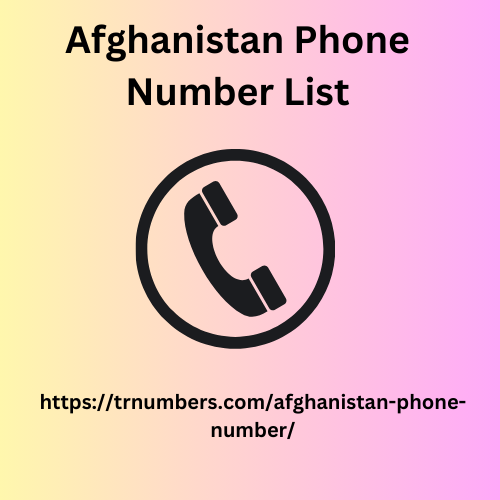Cold Transferring a Call (Customer Service Practice):
A customer service representative connects you directly to another department or person without speaking to the recipient first. This means the transferred person wouldn't know why you're calling or what you need.
Bad Cold Call (Sales Strategy Issue):
A bad cold call lacks any strategy or planning, leading to a negative experience for the potential customer. Here's how cold transferring contributes to a bad cold call:
Lack of Context: Afghanistan Phone Number List The transferred person (whether B2B or B2C) wouldn't have any background information about the call or your purpose. This can lead to confusion and frustration, making the call a waste of time for everyone involved.
Reduced Control: The initial salesperson loses control of the conversation and misses out on crucial steps for a successful cold call:
Qualifying the lead: Assessing if the potential customer is a good fit for your product or service (B2B) or if they have any interest at all (B2C).
Addressing objections: Overcoming any initial resistance the prospect might have.
Building rapport: Establishing a connection and trust with the potential customer. All of these are essential for a positive cold call experience.
Similarities of Bad Cold Calls and Cold Transfers:

Unprofessional: Both practices show a lack of professionalism and respect for the recipient's time.
Ineffective: They are unlikely to generate leads or sales.
Negative Experience: They create a negative experience for the potential customer, potentially damaging your brand image.
Alternatives to Cold Transfers (Good Cold Calling Techniques):
Targeted Calling Lists: Build lists with companies or consumers who are likely to be interested in your offering (B2B) or target demographics for B2C sales.
Prospect Research (B2B): Learn about the B2B company, their challenges, and decision-makers. Tailor your approach accordingly.
Develop a Clear Script: Craft a well-structured script with a strong opening, a compelling value proposition that addresses their needs (B2B) or benefits (B2C), and a clear call to action (e.g., scheduling a meeting or making a purchase).
Practice and Refine: The more you practice your cold calling skills, the more comfortable and effective you'll become. Role-playing with colleagues can be helpful.
Warm Transfers (if using autodialers): After an autodialer connects you, consider a warm transfer where you briefly explain the situation and the potential customer's needs before transferring them to a relevant department within your company (B2B).
Live Chat or Email Follow-Up (B2B & B2C): If the call doesn't connect with a person, consider following up through a live chat option or a personalized email from a salesperson.
By following these strategies and avoiding cold transfers, you can significantly improve your cold calling success rate and avoid the pitfalls of bad cold calls altogether.


